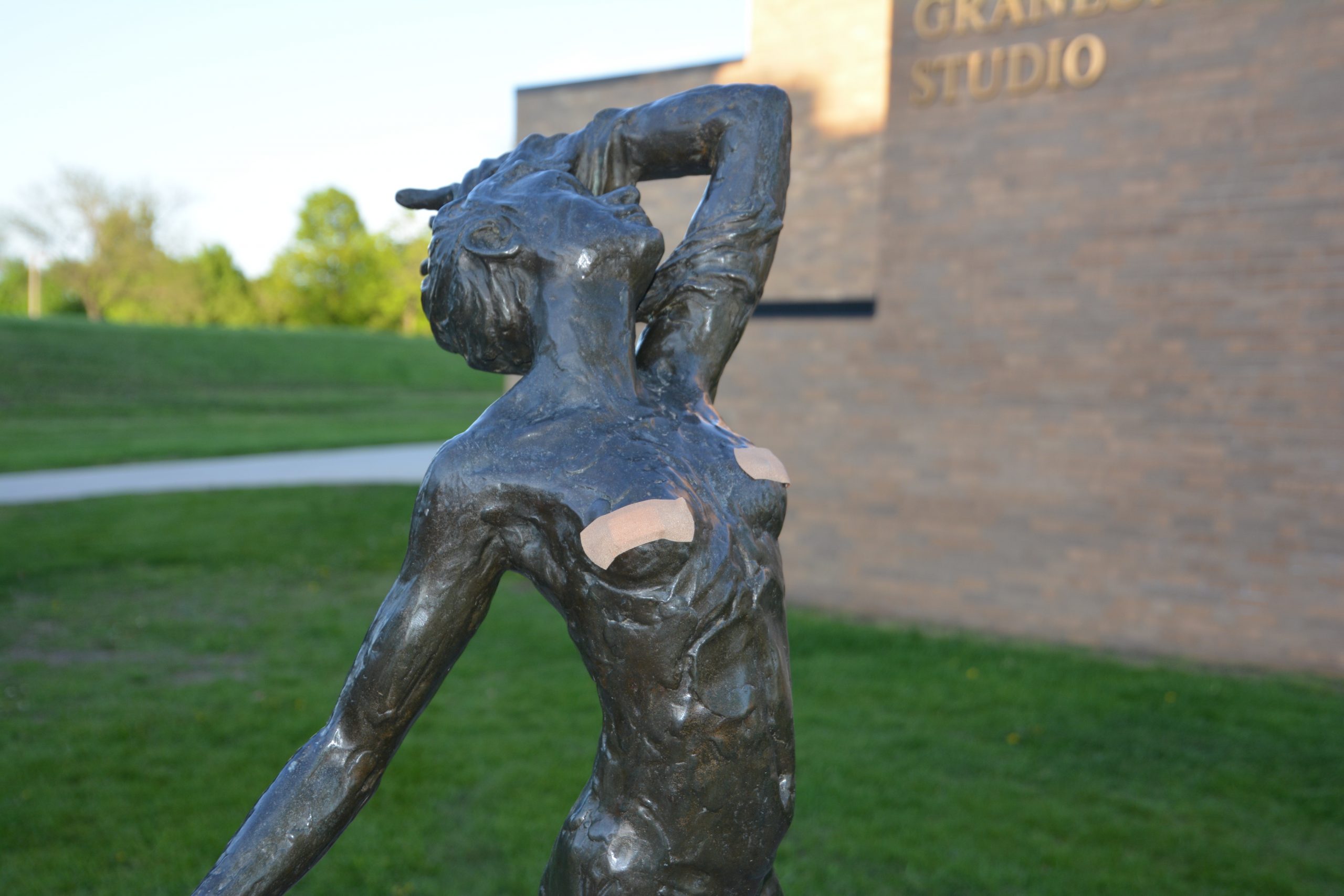Spring means stress, sleep deprivation, and a shortage of clothed male students. This week, campus was crawling in male students throwing frisbees, playing campus golf, and studying in the grass all in the absence of shirts. Campus Safety was nowhere to be seen and the general public appeared safe and content. Then, two perceived female students removed their shirts while sitting in the lawn, exposing their breasts. Observing students took pictures, sent snapchats, and made phone calls to the Dean of Students and Campus Safety to report the suspicious behavior.
It worked. Bystander intervention finally worked.
Wait. A nipple? We are reporting a nipple?
Driving past countless male nipples, a Campus Safety vehicle pulled up to the threat within minutes. An officer confronted the students, hysterically screaming and pointing, “You’re indecent!”
According to the official Gustavus policy regarding sexual harassment, the officer may be right. It states that it is a violation of Title IX to “[expose] one’s genitals or breasts in non-consensual circumstances.”
Had the officer approached any of the topless male students or any of the female students with cleavage, he also would have been right. The poorly written policy uses the term “breasts,” but fails to define what exactly a “breast” is, how much of the “breast” counts as “exposed”, and whose “breasts” we are talking about. Yet, based on recent events, the campus community and Campus Safety have made it very clear how the policy will be applied. It is only the bodies and “breasts” perceived to be female that are subjected to policing. The students in question this week are now facing possible college administration sanctions. On the third day of Nipplegate, backup was called. Usually reserved for intoxicated college students and (we can only hope) for rapists, a St. Peter police officer appeared on campus. The officer confronted the female nipple head on and returned the scene to safety. Male students remained unbothered, free of harassment, left to roam shirtless and unsanctioned.
The lack of logical policy extends beyond Gustavus. The Minnesota state law defines nudity as “the showing of the female breast with less than a fully opaque covering of any portion thereof below the top of the nipple.” Minnesota state law defines public indecency as “willfully and lewdly [exposing] the person’s body, or the private parts.” It goes on to include an exemption for breastfeeding.
A male breast is legal. A male nipple is legal. A female breast is legal, as long as the nipple is covered. Otherwise, the female nipple is illegal. But a female nipple with a baby attached is legal. Yet, Campus Safety threatened police action to females with covered nipples. Confused yet? I’m not even sure how to address the legal ambiguity of “private parts.”
The lack of clarity and the lack of a uniform definition of decency stems from a policy that has no basis beyond a long history of the policing of female bodies. We do not have to go back far to remember when female thighs or two-piece swimsuits were a cause of public outcry and legislative action.
It is not about morality. The lack of uniformity in policy makes that clear. It’s about policing women’s bodies. The current enforcement of such policies is frankly unsustainable. There is an entire spectrum of bodies and genders. Any attempt to create a binary between unacceptable and acceptable bodies is bound to result in illogical and discriminatory rules about who is allowed to sit in the sunshine.
